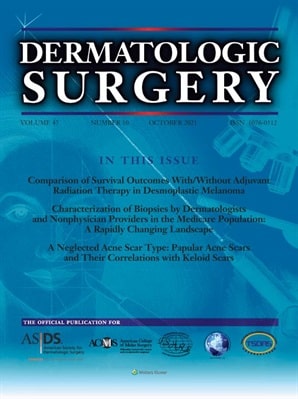
A Cadaveric Study of Dye Spreading: Determining the Ideal Injection Pattern for Masseter Hypertrophy (2021)
Title : A Cadaveric Study of Dye Spreading: Determining the Ideal Injection Pattern for Masseter Hypertrophy
Researcher : Sermswan, P., Tansatit, T., Meevassana, J., Panchaprateep, R.
Abstract : BACKGROUND: Masseter hypertrophy is the main cause of an asymmetrical and squared lower facial contour in the Asian community. Botulinum toxin injection technique is crucial to treat this condition.
OBJECTIVE: To improve injection techniques for masseter hypertrophy by elucidating the distribution of the injections within the masseter.
METHODS: Thirty masseter muscles were divided into 6 groups of 5 muscles each. Each group received one 0.2- or 0.3-mL injection at Point A, B, or C according to a three-point technique. Muscle dimensions and dye of the primary and secondary dye spreading were measured.
RESULTS: The average muscle length, width, and thickness were 69.87, 33.50, and 11.23 mm, respectively. The average primary longitudinal and horizontal spreading was 36.56 and 15.60 mm, respectively. No statistically significant difference was found between 0.2- and 0.3-mL injections at each point.
CONCLUSION: The three-point technique best fits in the safe zone and should be the standard injection technique for masseter hypertrophy. Injection at Points B and C may create secondary spreading that affect the risorius muscle and the parotid gland which are the cause of asymmetrical smiling and xerostomia, respectively. The dosage should be adjusted according to the muscle volume and not only the thickness.
Link to Academic article: DOI: 10.1097/DSS.0000000000003171
Journal : Dermatologic Surgery, 2021, 47(10).
Bibliography : Sermswan, P., Tansatit, T., Meevassana, J., & Panchaprateep, R. (2021). A Cadaveric Study of Dye Spreading: Determining the Ideal Injection Pattern for Masseter Hypertrophy. Dermatologic Surgery, 47(10), 1354–1358. DOI: 10.1097/DSS.0000000000003171
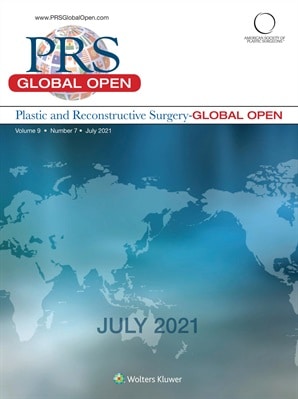
Achieving the Most Effective Hanging Points at the Lower End of the Face for Thread Lifting: Quantitative Measurement of Tissue Resistance in Different Facial Layers (2021)
Title : Achieving the Most Effective Hanging Points at the Lower End of the Face for Thread Lifting: Quantitative Measurement of Tissue Resistance in Different Facial Layers
Researcher : Rungsawang, C., Tansatit, T., Fasunloye, L.K., Uruwan, S.
Abstract : The thread lift procedure is a minimally invasive alternative to facelift surgery. The hanging point, which the terminal end of the thread is hooked into, is an important component. If it is loose and cannot stabilize the passage when the inserted thread is pulled, the lifting effect will fail. Therefore, the aim of this study was to elucidate the ability of the tissue to support the thread attachment in the different facial layers while performing this procedure. Twenty hemi-faces of 10 soft cadavers, which were divided into 45 blocks, were used to measure the tissue resistance in the midface area. The resistance of the soft tissue in the four facial layers in each block was measured while a 22G cannula connected with a force gauge was passed through it. The results showed that the tissue resistance in the sub-SMAS was higher than the SMAS and subcutaneous layers in the blocks located in the nasolabial and perioral regions. This was also significantly greater than the resistance in the subcutaneous layer in the three medial blocks below the oral commissure (P < 0.05). However, the low resistance of the sub-SMAS was found in the blocks located in the buccal and lower parotidomasseteric regions. Thus, it was preferable that the hanging point was based in the deep plane (sub-SMAS and SMAS layers) of the nasolabial, perioral, and upper parotidomasseteric regions. Moreover, the sub-SMAS layer within the buccal and lower parotidomasseteric regions should be avoided due to the loose attachment in the buccal capsule and subplatysmal fat.
Link to Academic article: DOI: 10.1097/GOX.0000000000003701
Journal : Plastic and Reconstructive Surgery – Global Open, 2021, 9(7).
Bibliography : Rungsawang, C., Tansatit, T., Fasunloye, L. K., & Uruwan, S. (2021). Achieving the Most Effective Hanging Points at the Lower End of the Face for Thread Lifting: Quantitative Measurement of Tissue Resistance in Different Facial Layers. Plastic and Reconstructive Surgery – Global Open, 9(7), e3701. DOI: 10.1097/GOX.0000000000003701

Anatomical Study of the Dorsal Nasal Artery to Prevent Visual Complications during Dorsal Nasal Augmentation (2021)
Title : Anatomical Study of the Dorsal Nasal Artery to Prevent Visual Complications during Dorsal Nasal Augmentation
Researcher : Tansatit, T., Jitaree, B.,Uruwan, S. Rungsawang, C.,
Abstract : Dorsal nasal augmentation is a common injection associated with ocular complications. Digital compressions on both sides of the nose are recommended during injection. Considering the reported incidences of visual complications, this preventive technique may need an adjustment for more effectiveness to prevent blindness. Therefore, the dorsal nasal arteries (DNAs) were studied by conventional dissections in the subcutaneous and fibromuscular tissues of the nasal dorsum in 60 embalmed cadavers. The results showed that among the 60 faces, 32 faces had bilateral DNAs (53.3%), 23 had dorsal nasal plexus with minute arteries (38.3%), and five had a single dominant DNA (8.3%). The DNA originated from one of the four arterial sources, which influenced the location and course of the artery. These sources included the ophthalmic angular arteries in 21 faces (56.8%), terminal ophthalmic arteries in two faces (5.4%), lateral nasal arteries in 11 faces (29.7%) and facial angular arteries in three faces (8.1%). Consequently, the dominant dorsal nasal artery running close to the midline found in 8% of the cases could make side compressions during nasal dorsum augmentation less effective from preventing ocular complications. However, an adjustment of digital compressions which combines pinching and side compressions is suggested to improve the safety.
Link to article: Plastic and Reconstructive Surgery – Global Open, 2021, 9(11), pp. E3924. https://doi.org/10.1097/GOX.0000000000003924
Journal : Plastic and Reconstructive Surgery – Global Open / in Scopus
Citation : Tansatit, T., Jitaree, B., Uruwan, S. & Rungsawang, C., (2021). Anatomical Study of the Dorsal Nasal Artery to Prevent Visual Complications during Dorsal Nasal Augmentation. Plastic and Reconstructive Surgery – Global Open, 9(11), e3924. https://doi.org/10.1097/GOX.0000000000003924
ฐานข้อมูลงานวิจัย มหาวิทยาลัยสยาม : –
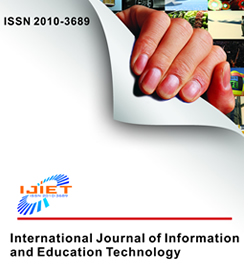
Applying process mining to analyze the behavior of learners in online courses (2021)
Title : Applying process mining to analyze the behavior of learners in online courses
Researcher : Arpasat, P., Premchaiswadi, N., Porouhan, P., Premchaiswadi, W.
Department : Doctor of Philosophy Program in Information Technologyy, Graduate School, Siam University
E-mail :
ฐานข้อมูลงานวิจัย มหาวิทยาลัยสยาม : https://e-research.siam.edu/kb/applying-process-mining-to-analyze/
Link to article: International Journal of Information and Education Technology, 2021, 11(10), pp. 436–443. https://doi.org/10.18178/ijiet.2021.11.10.1547
Publication: International Journal of Information and Education Technology / in Scopus
Bibliography : Arpasat, P., Premchaiswadi, N., Porouhan, P., Premchaiswadi, W. (2021). Applying process mining to analyze the behavior of learners in online courses. International Journal of Information and Education Technology, 11(10), 436–443. https://doi.org/10.18178/ijiet.2021.11.10.1547
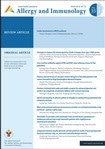
Association of HLA genotypes with Beta-lactam antibiotic hypersensitivity in children (2021)
Title : Association of HLA genotypes with Beta-lactam antibiotic hypersensitivity in children
Researcher : Clin.Prof.Suwat Benjaponpitak
Department : Faculty of Medicine, Siam University, Bangkok, Thailand
E-mail : med@siam.edu
Abstract : Background: Beta-lactam (BL) antibiotics hypersensitivity is common in children. Clinical manifestation of BL hypersensitivity varies from mild to severe cutaneous adverse drug reactions (SCARs).
Objective: To determine the association of HLA genotype and BL hypersensitivity and the prevalence of true drug allergy in patients with history of BL hypersensitivity.
Methods: A case-control study was performed in 117 children with aged 1-18 years. Children with history of non-SCARs BL hypersensitivity were evaluated for true drug hypersensitivity including skin test and drug provocation test. Tolerant control patients were children who could tolerate BL for at least 7 days without hypersensitivity reaction. HLA genotype (HLA-A, HLA-B, HLA-C and HLA-DRB1) were performed in 24 cases and 93 tolerant controls using PCR-SSO (polymerase chain reaction – sequence specific oligonucleotide probes).
Results: There were association of HLA-C*04:06 (OR = 13.14, 95%CI: 1.3-137.71; p = 0.027), and HLA-C*08:01 (OR = 4.83, 95%CI: 1.93-16.70; p = 0.016) with BL hypersensitivity. HLA-B*48:01 was strongly associated with immediate reaction from BL hypersensitivity (OR = 37.4, 95%CI: 1.69-824.59; p = 0.016) while HLA-C*04:06, HLA-C*08:01 and HLA-DRB1*04:06 were associated with delayed reaction (p < 0.05). Among 71 cases who were newly evaluated for BL hypersensitivity, only 7 cases (9.8%) had true BL hypersensitivity.
Conclusions: Less than 10% of children with suspected of BL hypersensitivity have true hypersensitivity. There might be a role of HLA-B, HLA-C and HLA-DRB1 genotype in predicting BL hypersensitivity in Thai children.
Link to Academic article: Asian Pacific Journal of Allergy and Immunology, 2021, 39(3), pp. 197–205. DOI: 10.12932/AP-271118-0449
Journal : Asian Pacific journal of allergy and immunology / in Scopus
Citation : Singvijarn, P., Manuyakorn, W., Mahasirimongkol, S., Wattanapokayakit, S., Inunchot, W., Wichukchinda, N., Suvichapanich, S., Kamchaisatian, W., & Benjaponpitak, S. (2021). Association of HLA genotypes with Beta-lactam antibiotic hypersensitivity in children. Asian Pac J Allergy Immunol. 39(3), 197–205. doi: 10.12932/AP-271118-0449. Epub ahead of print. PMID: 31012593.
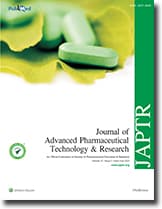
Bioactivities of karanda (Carissa carandas Linn.) fruit extracts for novel cosmeceutical applications (2021)
Title : Bioactivities of karanda (Carissa carandas Linn.) fruit extracts for novel cosmeceutical applications
Researcher : Monsicha Khuanekkaphan1, Warachate Khobjai2, Chanai Noysang3, Nakuntwalai Wisidsri1, Suradwadee Thungmungmee3
Department : 1 Department of Health and Aesthetics, Thai Traditional Medicine College, Rajamangala University of Technology, Thanyaburi, Pathum Thani, Thailand
2 Department of Clinical Chemistry, Faculty of Medical Technology, Nation University, Lampang, Thailand
3 Department of Innovation of Health Products, Thai Traditional Medicine College, Rajamangala University of Technology, Thanyaburi, Pathum Thani, Thailand
Abstract : The aim of this research was to determine the total phenolic content (TPC), antioxidation, antiaging, and antibacterial activities of Carissa carandas Linn., and aims at the novel plant sources which is utilized for their cosmeceutical applications. The two conditions (fresh and dried) and three stages (unripe, ripe, and fully ripe) of C. carandas were extracted by ethanolic maceration. Folin–Ciocalteu assay was used for determining the TPC. 2,2-diphenyl-1-picrylhydrazyl (DPPH) and 2,2′-azinobis(3-ethylbenzothiazoline-6-sulfonic acid) (ABTS) assays were used for estimating antioxidant activity. The inhibitory tyrosinase activities were measured using the modified dopachrome assay. Antiaging was evaluated by inhibition of collagenase and elastase, and antibacterial activities. The result of six extracts from C. carandas showed that the highest phenolic content and elastase inhibition of the fresh fruit in fully ripe stage were 100.31 ± 2.64 mg GAE/g extract and 14.11% ± 0.95%, respectively. The fresh fruit in the unripe stage showed that the strongest percentage of DPPH IC50 and collagenase inhibitory activity were 29.11 ± 0.23 μg/mL and 85.94% ± 2.21%, respectively. The ethanolic extract of unripe dried fruit exhibited the highest antioxidant activity in the of ABTS assay, with an IC50 of 0.17 ± 0.01 μg/mL. The MBC displayed the dried fruit ripe stage anti Cutibacterium acnes, Staphylococcus epidermidis, and Staphylococcus aureus strains were 25.0, 25.0, and 16.25 mg/mL, respectively. The fresh fruit in the ripe stage showed that the strongest inhibition tyrosinase was 93.88% ± 5.64%. The conclusion of this research indicates that the fresh fruit of C. carandas fruit extracts has high potential as a novel cosmeceuticals’ applications to antiaging and skin whitening. The dried fruit in ripe stage extract has the most effective ingredient for antiacne products.
Keywords: Antiaging, antibacterial, Carissa carandas, cosmeceuticals, karanda
Link to Academic article: DOI: 10.4103/japtr.JAPTR_254_20
Journal : Journal of Advanced Pharmaceutical Technology and Research, 2021, 12(2)
Bibliography : Khuanekkaphan, M., Khobjai, W., Noysang, C., Wisidsri, N., & Thungmungmee, S. (2021). Bioactivities of karanda (Carissa carandas Linn.) fruit extracts for novel cosmeceutical applications. J Adv Pharm Technol Res, 12(2) 162-168. Retrieved from https://www.japtr.org/text.asp?2021/12/2/162/314675
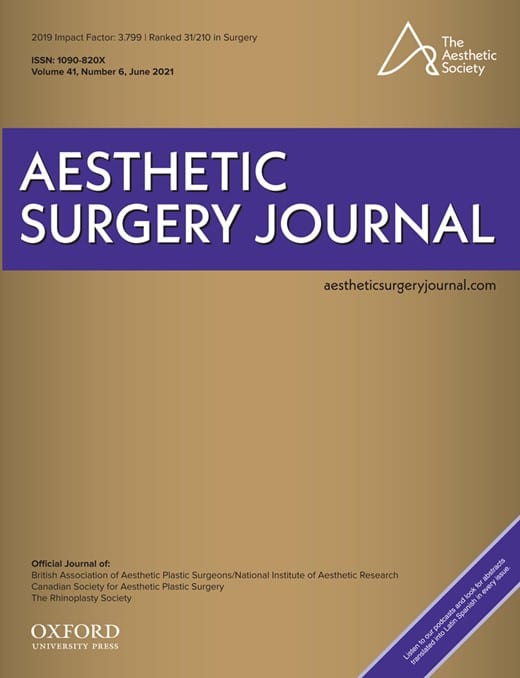
Cadaveric Dissections to Determine Surface Landmarks Locating the Facial Artery for Filler Injections (2021)
Title : Cadaveric Dissections to Determine Surface Landmarks Locating the Facial Artery for Filler Injections
Researcher : Tansatit, T., Kenny, E., Phumyoo, T., Jitaree, B.
Abstract : Background: The facial artery is a high-risk structure when performing filler injections at the nasolabial fold, buccal, and mandibular regions.
Link to Academic article: https://doi.org/10.1093/asj/sjaa235
Journal : Aesthetic Surgery Journal, 2021, 41(6).
Bibliography : Tansatit, T., Kenny, E., Phumyoo, T., & Jitaree, B. (2021). Cadaveric Dissections to Determine Surface Landmarks Locating the Facial Artery for Filler Injections. Aesthetic Surgery Journal, 41(6), NP550–NP558. https://doi.org/10.1093/asj/sjaa235
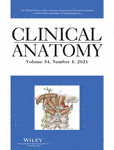
Clinical implications of the arterial supplies and their anastomotic territories in the nasolabial region for avoiding arterial complications during soft tissue filler injection (2021)
Title : Clinical implications of the arterial supplies and their anastomotic territories in the nasolabial region for avoiding arterial complications during soft tissue filler injection
Researcher : Jitaree, B., Phumyoo, T., Uruwan, S., …Pratoomthai, B., Tansatit, T.
Abstract : Introduction: The nasolabial fold (NLF) causes particular concern during aging in the middle face region. However, arterial complications of filler injections at this site have been continually reported during recent years. The aim of this study was to investigate the arterial locations and their anastomotic pathways related to filler injection sites in the NLF.
Materials and methods: Thirty hemi-faces of 15 embalmed Thai cadavers were dissected. Three anatomical landmarks of NLFs were assigned: the inferior margin level (NLF1), the mid-philtral horizontal line level (NLF2), and the inferior alar level (NLF3). Ten hemi-faces of five soft embalmed Thai cadavers underwent a modified Sihler’s staining procedure to investigate the arterial anastomoses.
Results: The artery closest to all of the landmarks was the facial artery. It was located inferomedial to NLF1 in 28%, and the mean distances along the X- and Y-axes were 3.53 ± 2.11 mm and 3.53 ± 1.75 mm, respectively. It was also located medial to NLF2 in 52.1% with an X-axis distance of 4.93 ± 1.53 mm. Several arteries were located close to NLF3, including the facial (33.3%), lateral nasal (33.3%), and infraorbital (30.0%) arteries. Anastomoses of the nasolabial arteries served to connect both the external–external and internal–external carotid systems.
Conclusions: Several arteries are located close to NLF1–NLF3. To prevent arterial injury, the locations and anastomotic pathways, as possible sources of severe complications, should be recognized prior to NLF filler injection.
Link to Academic article: https://doi.org/10.1002/ca.23617
Journal : Clinical Anatomy, 2021, 34(4).
Bibliography : Jitaree, B., Phumyoo, T., Uruwan, S., Jiirasutat, N., Pratoomthai, B., & Tansatit, T.(2021). Clinical implications of the arterial supplies and their anastomotic territories in the nasolabial region for avoiding arterial complications during soft tissue filler injection. Clinical Anatomy, 34(4), 581–589.
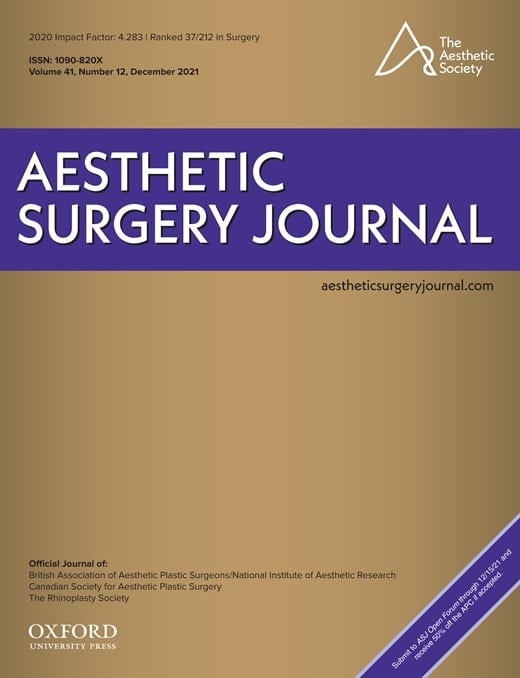
Commentary on: Deployment of the Ophthalmic and Facial Angiosomes in the Upper Nose Overlaying the Nasal Bones (2021)
Title : Commentary on: Deployment of the Ophthalmic and Facial Angiosomes in the Upper Nose Overlaying the Nasal Bones
Researcher : Tansatit, T., Phumyoo, T., Jitaree, B., Rungsawang, C., Uruwan, S.
Abstract : The authors studied patterns of nasal angiosomes focusing on the arterial sources of the upper nose and the midline anastomoses employing 3-dimensional reconstructed computed tomography imaging with radiopaque enhancement in 62 fresh cadaver heads.1 Unfortunately, the presence of subcutaneous plexuses interfered with visualization of the deep arteries. After some technical adjustment, only 26 cadaver noses were available for analysis. The authors carefully classified nasal arterial patterns into 3 types with additional 7 subtypes. Besides their fantastic work, the authors transferred their findings into clinical practice and estimated blindness risks. Some additional issues of blindness risks are further discussed in this comment for more clarification.
Link to Academic article: https://doi.org/10.1093/asj/sjaa397
Journal : Aesthetic Surgery Journal, 2021, 41(12).
Bibliography : Tansatit, T., Phumyoo, T., Jitaree, B., Rungsawang, C., & Uruwan, S. (2021). Commentary on: Deployment of the Ophthalmic and Facial Angiosomes in the Upper Nose Overlaying the Nasal Bones. Aesthetic Surgery Journal, 41(12), NP1986–NP1988. https://doi.org/10.1093/asj/sjaa397
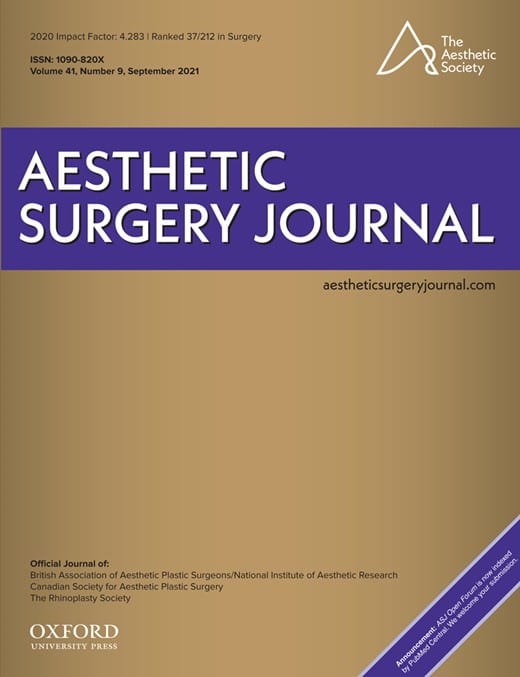
Commentary on: Safe Glabellar Wrinkle Correction with Soft Tissue Filler Using Doppler Ultrasound (2021)
Title : Commentary on: Safe Glabellar Wrinkle Correction with Soft Tissue Filler Using Doppler Ultrasound
Researcher : Phumyoo, T., Tansatit, T., Jitaree, B.
Abstract : The authors suggest that Doppler ultrasound can be used to locate the supratrochlear artery before hyaluronic acid filler injection at the glabellar wrinkles to avoid ophthalmologic complications.1 In 42 patients with 74 glabellar wrinkle lines, they reported that the supratrochlear arteries were located both at the glabellar wrinkle lines (30/74, 41%) and lateral to the glabellar wrinkle lines (44/74, 59%). They abandoned filler injection in patients whose supratrochlear artery was located at the glabellar wrinkle lines. In these 30 potentially at-risk glabellar lines, the artery was located at the deep subcutaneous layer in 24 and at the subdermal layer in 6 wrinkle lines.
Link to Academic article: https://doi.org/10.1093/asj/sjaa326
Journal : Aesthetic Surgery Journal, 2021, 41(9).
Bibliography : Phumyoo, T., Tansatit, T., & Jitaree, B. (2021). Commentary on: Safe Glabellar Wrinkle Correction with Soft Tissue Filler Using Doppler Ultrasound. Aesthetic Surgery Journal, 41(9), 1090–1093. https://doi.org/10.1093/asj/sjaa326